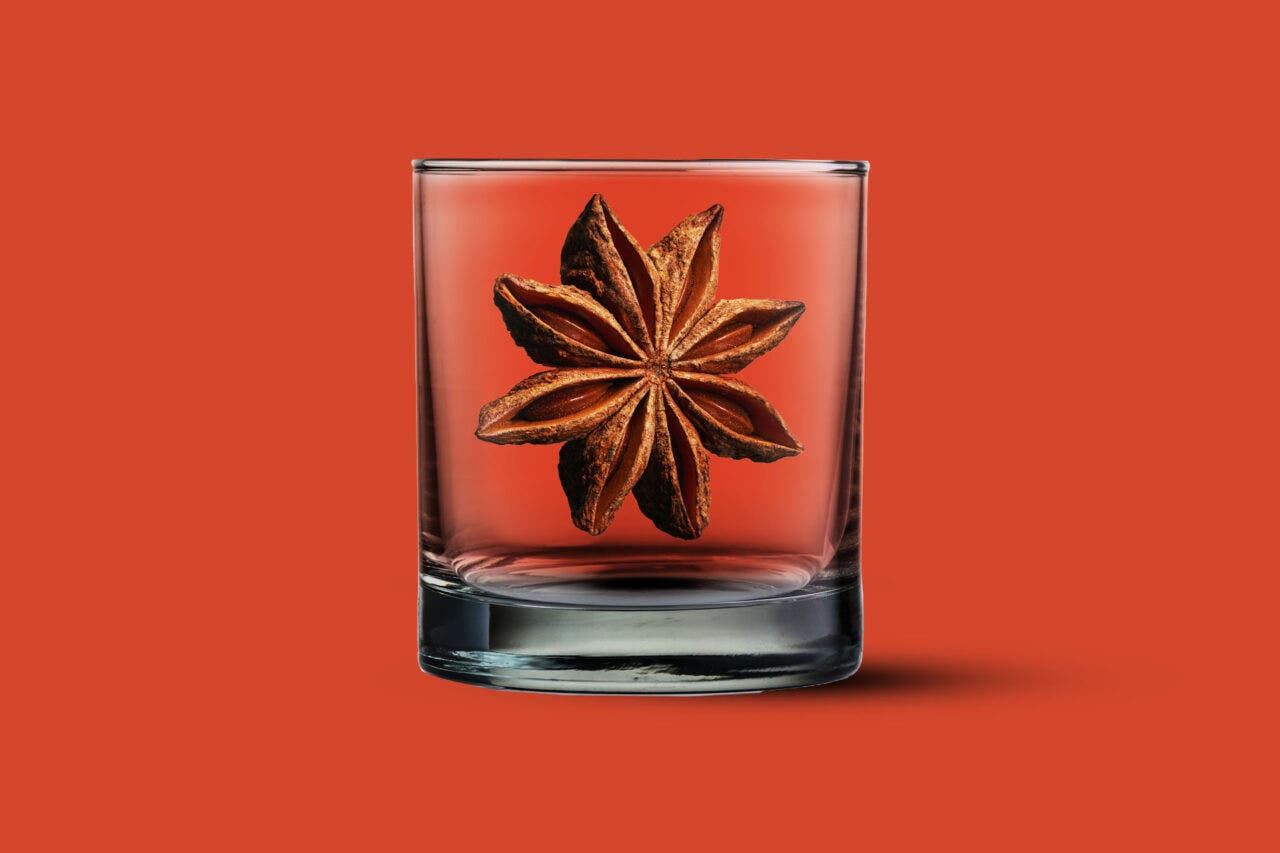There’s a long list of flavors that people seem to either love or hate. Along with cilantro and blue cheese, many have strong opinions about anise, which has a taste profile resembling black licorice.
“Licorice is just a polarizing flavor,” says Anthony Caporale, director of spirits education at the Institute of Culinary Education, who loves the flavor of anise. “My take is that it’s a slightly unsettling mix of sweet and bitter. It has just a little bit too much of both, and not everyone can process that at the same time.”
Anise has been used for centuries as a flavoring for distilled spirits in many different countries. Growing up in an Italian-American family, Caporale’s grandparents often drank Anisette, an anise-flavored liqueur, with coffee. “That was always passed around after meals,” he says.
But even if you don’t love the flavor, there are several ways to drink anise spirits. Here, experts share everything you need to know about enjoying them.
What Is Anise?
The anise flavor and aroma may resemble licorice, but the two aren’t from the same plant. Licorice comes from the root of the Glycyrrhiza glabra plant. In comparison, anise is derived from the seeds of the Pimpinella anisum, one of the oldest spice plants that have been grown in the Middle East and Mediterranean for generations.
“Many of us equate anise and licorice because of their similarities, and anise is often used as a flavor in licorice candies, but I think of anise as sharper, spicier and slightly sweeter,” says Danny Ronen, founder of DC Spirits and spirits educator at Shaker & Spoon.
Anise liqueurs feature “very strong medicinal flavored plant extracts,” says Caporale. It was traditionally used for healing purposes but today is enjoyed across the globe as a flavoring for cooked dishes and baked goods.
How Anise Spirits Are Made
There are dozens of anise-flavored spirits, and they’re all made a little bit differently. From Lebanon’s arak and Greece’s mastika, to raki from Turkey and aguardiente from Spain and Portugal, each has its own unique origins, qualities and tastes. But, each anise spirit is similar in that they have a distilled spirit base and an alcohol by volume (abv) of around 35%–50%, according to Caporale.
Ouzo is a spirit from Greece that is made from wine grapes that are distilled to a high purity to remove the grape flavor. “So, you end up with a very clean, neutrally-flavored base spirit and then they flavor it with the anise,” says Caporale.
Another example is sambuca, which originated in Italy. Anise must be its main ingredient, but it often features other flavors and tends to be on the sweeter side. While French pastis is a spirit made by mixing a neutral alcohol base with anise. It was created as a replacement for absinthe, which is also anise-flavored.
How to Use Anise
Anise’s potency can be overwhelming for some people who aren’t crazy about the flavor, according to Gregory Bonath, a chef instructor at the Auguste Escoffier School of Culinary Arts in Austin. “It can take trial and error to find particular applications or quantities of the flavor you enjoy.”
But you may be surprised by how much you like the right combination. Give these anise liqueur ideas a try, straight from bar experts.
Pair It With Coffee
Sambuca is classically served “with the fly,” meaning neat with three coffee beans floating on the top to represent prosperity, health and happiness. Caporale recommends mixing it (or another anise spirit) into an Espresso Martini or with a shot of espresso.
“Anise goes very well with coffee,” says Bonath, who also suggests using anise in coffee-flavored cocktails, like a White Russian.
Add the Essence to Cocktails
Some drinks only require a subtle flavor of anise. Absinthe, which has seen a resurgence in recent years, is traditionally used to coat the glass when making a Sazerac, a rye whiskey-based cocktail including bitters and sugar. It is then discarded before completing the drink. But, some recipes use other anise liqueurs instead, such as Herbsaint, which is made in New Orleans.
Besides a Sazerac, Ronen recommends putting anise liqueur in an atomizer and spritzing it over the top of just about any gin cocktail to brighten it up.
Dilute With Water
Emanuele Balestra, bars director at Hotel Barriere’s Le Majestic and Le Gray d’Albion in Cannes, France, says he feels anise is too strong to use in cocktails. He prefers to mix anise liqueur, like Pernod, with water to make a Pastis drink, which is popular in France.
Milos Zica, partner and beverage director of Fandi Mata in New York City, grew up in the Adriatic coastal region and says mastiha (or mastika) is his favorite anise liqueur. He enjoys it with water and ice and says it also works well in vodka, gin or white rum cocktails. “It’s light in body with a honey-like sweetness,” says Zica.
Sip With Citrus
Bonath enjoys the combination of anise and citrus. He suggests adding anise to an orange or grapefruit crush, which is a popular drink that originated in Maryland. It’s made with orange juice, vodka, triple sec and soda.
Additionally, Caporale recommends making a Harvey Wallbanger, which he describes as an “old-school throwback drink.” It’s made with vodka, orange juice and Galliano, an Italian vanilla-anise liqueur. “If you’re not a huge fan of the anise flavor, Galliano is often a nice stepping-stone because the vanilla mellows it out a lot,” he says.
Izzy Tulloch, head bartender at Milady’s in New York City, says aguardiente is her favorite anise spirit, and she loves drinking it “simple with lots of lime and soda.”
Pour It Neat
“The best way to find a favorite and appreciate the flavor is to drink it neat,” says Bonath.
Any anise-flavored spirit can be sipped on as an after-dinner drink, or digestif, either neat, chilled or over ice.
Published: January 20, 2023















